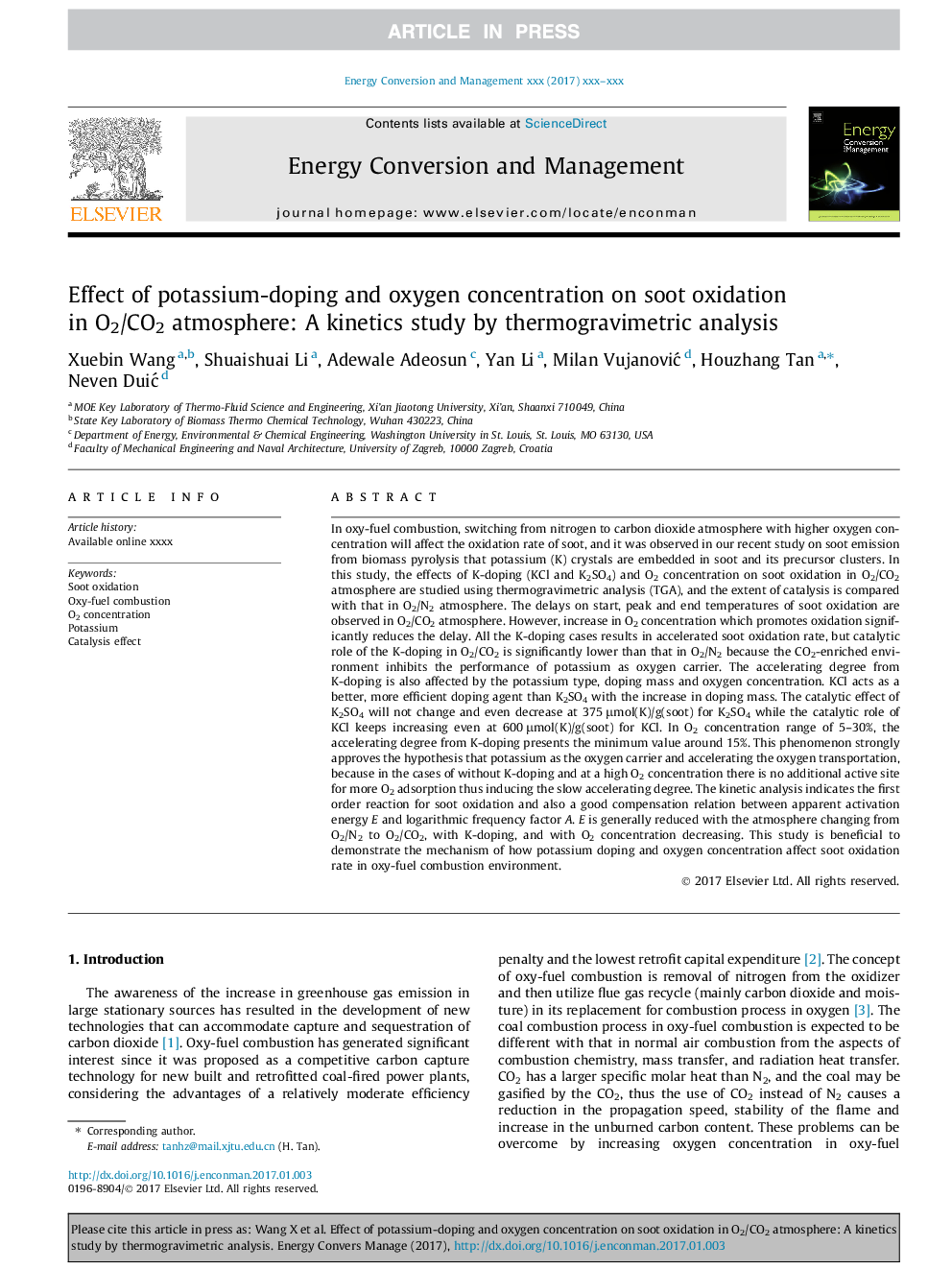| کد مقاله | کد نشریه | سال انتشار | مقاله انگلیسی | نسخه تمام متن |
|---|---|---|---|---|
| 5012455 | 1462813 | 2017 | 12 صفحه PDF | دانلود رایگان |
عنوان انگلیسی مقاله ISI
Effect of potassium-doping and oxygen concentration on soot oxidation in O2/CO2 atmosphere: A kinetics study by thermogravimetric analysis
دانلود مقاله + سفارش ترجمه
دانلود مقاله ISI انگلیسی
رایگان برای ایرانیان
کلمات کلیدی
موضوعات مرتبط
مهندسی و علوم پایه
مهندسی انرژی
انرژی (عمومی)
پیش نمایش صفحه اول مقاله

چکیده انگلیسی
In oxy-fuel combustion, switching from nitrogen to carbon dioxide atmosphere with higher oxygen concentration will affect the oxidation rate of soot, and it was observed in our recent study on soot emission from biomass pyrolysis that potassium (K) crystals are embedded in soot and its precursor clusters. In this study, the effects of K-doping (KCl and K2SO4) and O2 concentration on soot oxidation in O2/CO2 atmosphere are studied using thermogravimetric analysis (TGA), and the extent of catalysis is compared with that in O2/N2 atmosphere. The delays on start, peak and end temperatures of soot oxidation are observed in O2/CO2 atmosphere. However, increase in O2 concentration which promotes oxidation significantly reduces the delay. All the K-doping cases results in accelerated soot oxidation rate, but catalytic role of the K-doping in O2/CO2 is significantly lower than that in O2/N2 because the CO2-enriched environment inhibits the performance of potassium as oxygen carrier. The accelerating degree from K-doping is also affected by the potassium type, doping mass and oxygen concentration. KCl acts as a better, more efficient doping agent than K2SO4 with the increase in doping mass. The catalytic effect of K2SO4 will not change and even decrease at 375 μmol(K)/g(soot) for K2SO4 while the catalytic role of KCl keeps increasing even at 600 μmol(K)/g(soot) for KCl. In O2 concentration range of 5-30%, the accelerating degree from K-doping presents the minimum value around 15%. This phenomenon strongly approves the hypothesis that potassium as the oxygen carrier and accelerating the oxygen transportation, because in the cases of without K-doping and at a high O2 concentration there is no additional active site for more O2 adsorption thus inducing the slow accelerating degree. The kinetic analysis indicates the first order reaction for soot oxidation and also a good compensation relation between apparent activation energy E and logarithmic frequency factor A. E is generally reduced with the atmosphere changing from O2/N2 to O2/CO2, with K-doping, and with O2 concentration decreasing. This study is beneficial to demonstrate the mechanism of how potassium doping and oxygen concentration affect soot oxidation rate in oxy-fuel combustion environment.
ناشر
Database: Elsevier - ScienceDirect (ساینس دایرکت)
Journal: Energy Conversion and Management - Volume 149, 1 October 2017, Pages 686-697
Journal: Energy Conversion and Management - Volume 149, 1 October 2017, Pages 686-697
نویسندگان
Xuebin Wang, Shuaishuai Li, Adewale Adeosun, Yan Li, Milan VujanoviÄ, Houzhang Tan, Neven DuiÄ,